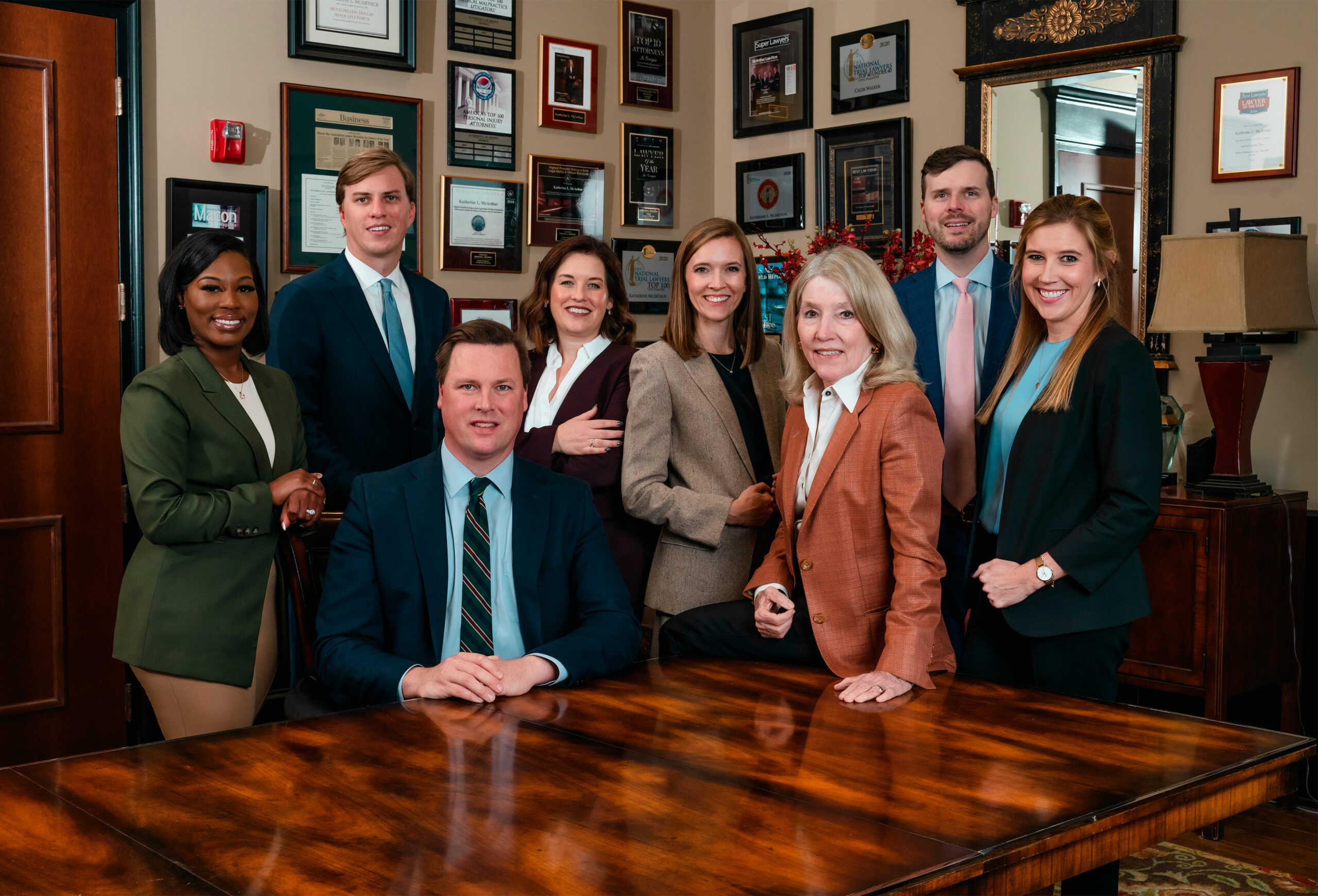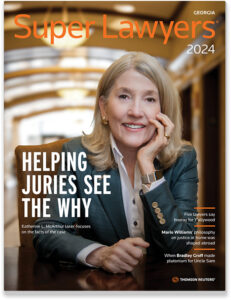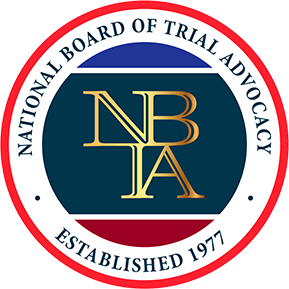No parent should have to get a phone call that their child has been injured in a place that promised to protect them. When a child is hurt at a Georgia school or daycare, the consequences are often serious, and the cause is rarely just “an accident.” These injuries are usually the result of improper supervision, unsafe conditions, or carelessness by the people responsible for keeping children safe. Georgia law gives families the legal right to take action when a school or daycare fails to meet that responsibility.
At McArthur Law Firm, we don’t treat these cases lightly. School and daycare injury claims require focused legal work, immediate investigation, and a willingness to hold institutions accountable—even when they refuse to accept fault. These are not routine injury claims. They involve children, long-term medical issues, and complicated liability questions.
Georgia School and Daycare Injury Lawyer
When a child is hurt at a Georgia school or daycare, the consequences are often serious, and the cause is rarely just “an accident.” Your child should be safe and protected at school.
McArthur Law Firm serves Fulton County, Bibb County and Fulton County, as well as Clayton County, Cherokee County, Forsyth County, and other counties in Georgia. For more information about the McArthur Law Firm or to set up a free consultation to learn what we may be able to do to help you with your personal injury case, give us a call at one of our offices in Georgia or fill out our online contact form.
- Atlanta Office: 404-565-1621
- Macon Office: 478-238-6600
- Warner Robins: 478-551-9901
Overview of School and Daycare Injury Claims in Georgia
- About Schools and Daycares in Georgia
- Types of School and Daycare Injuries in Georgia
- Determining Who Can Be Held Responsible for a School / Daycare Injury
- Insurance Issues with Private Childcare Centers
- Frequently Asked Questions
- Additional Resources
About Schools and Daycares in Georgia
Georgia provides many educational and childcare options. Public schools are state-funded and free, while charter and private schools offer specialized or alternative programs. Special and alternative schools support students with unique learning or behavioral needs. Childcare includes licensed centers, in-home daycares, and exempt programs like church-based care. Licensed facilities follow state health and safety rules, while exempt ones meet only basic standards. Supervision, staff training, and available resources vary depending on the type of school or daycare chosen.
Types of School and Daycare Injuries in Georgia
Physical Abuse by Staff or Other Children — In certain unfortunate circumstances, children may be subjected to physical harm by adults or other children within a school or daycare setting. This may include instances of hitting, slapping, pushing, or the use of excessive restraint. These situations, while not common, are deeply concerning and can lead to both physical and emotional consequences for the child involved. Reports of such incidents often arise in the context of disciplinary actions or conflicts between children that escalate without intervention.
Negligent Supervision Leading to Falls or Head Injuries — Children—especially younger ones—are at increased risk of injury in environments where active play and movement are common. When supervision is insufficient, accidents such as falls from chairs, stairs, or playground equipment may occur. These falls can result in a variety of injuries, including head trauma, concussions, lacerations, or fractures. These incidents are often linked to moments when staff members are distracted or overwhelmed.
Playground Accidents and Equipment Failures — Playgrounds are a common source of injury in both school and daycare environments. Accidents may result from damaged or poorly constructed equipment, unstable play surfaces, or missing protective features. Children may suffer broken bones, dislocations, chipped teeth, or other injuries while climbing, sliding, or engaging in physical play. These injuries can happen quickly and may not always be immediately detected.
Injuries from Unsafe Facilities — Many school and daycare buildings, especially older ones, may contain physical hazards that contribute to injury. Examples include broken stair treads, slippery floors, loose carpeting, exposed electrical outlets, or leaking ceilings. These facility-related issues can lead to slips, trips, and falls, as well as more serious incidents depending on the nature of the hazard. The risk is particularly heightened in high-traffic areas or places where children engage in active movement.
Sports-Related Injuries During School Activities — Organized sports and physical education are beneficial for children’s development, but they also carry a risk of injury. Common incidents involve twisted ankles, bruises, sprains, and, in more serious cases, broken bones or concussions. These injuries may occur during school-sponsored sports like basketball, soccer, football, or track, and can happen whether or not direct contact is involved.
Transportation Accidents — Transportation to and from school or daycare—whether in buses, vans, or staff-driven vehicles—can be another area where injuries occur. Accidents may involve sudden stops, collisions, or boarding and exiting incidents. Injuries from transportation events may include whiplash, lacerations, contusions, or more severe internal trauma depending on the nature of the incident.
Injuries from Hazardous Substances — Children in educational or care settings may sometimes be exposed to harmful substances. These can include household cleaning chemicals, disinfectants, art supplies, or improperly stored medications. Exposure can lead to skin irritation, respiratory issues, nausea, allergic reactions, or poisoning. These injuries may occur accidentally during daily operations or through unintended access to restricted areas.
Infections or Illness from Poor Hygiene — Environments with high child-to-child interaction are particularly vulnerable to the spread of illness. Inadequate hygiene practices—such as infrequent handwashing, unsanitized toys, or improper diapering methods—can contribute to outbreaks of viral or bacterial infections. Symptoms may range from mild gastrointestinal upset to more serious illnesses that require medical attention. Illnesses of this nature can spread quickly among children in close contact, especially during cold and flu season.
Determining Who Can Be Held Responsible for a School / Daycare Injury
The School Or Daycare Facility — When a child is injured at a school or daycare, the facility itself may be responsible if it failed to provide a safe environment. Under O.C.G.A. § 51-1-6, a person or entity that breaks a legal duty and causes injury may owe damages to the victim. In this case, schools and daycares have a duty to maintain safe premises, properly train their staff, and follow supervision standards. If the facility ignored known risks, allowed unsafe conditions to continue, or failed to follow safety procedures, it may be liable for the harm caused.
Teachers, Staff, Or Caregivers — Individual employees—including teachers, aides, and caregivers—can also be held responsible if they personally caused harm through careless or reckless behavior. If a teacher fails to supervise children, allows dangerous play, or mishandles a child, they may be liable for injuries that result. Staff may also be responsible for failing to follow emergency medical procedures or ignoring allergy warnings.
Property Owners Or Landlords — If the school or daycare rents its building, the landlord or property owner may be responsible for injuries caused by unsafe conditions, such as broken stairs, faulty wiring, or leaking pipes. Under O.C.G.A. § 51-3-1, property owners have a duty to keep their premises safe for people who are invited onto the property, including children. If they knew—or should have known—about a dangerous condition and failed to fix it, they could be held liable.
Transportation Providers And Drivers — Children are sometimes injured while riding in daycare vans or school buses. If the transportation is provided by a private company or contracted service, that company may be liable for accidents caused by its drivers or poorly maintained vehicles. The legal standard of negligence still applies under O.C.G.A. § 51-1-6, and determining who is at fault may require a full investigation. If a school employee was driving, the school itself may also share liability.
Product Manufacturers — In cases where a child is hurt by a defective toy, unsafe crib, broken playground equipment, or another product used by the facility, the company that made or sold the item may be legally responsible. These are called product liability cases under O.C.G.A. § 51-1-11.
Government Entities And Public School Systems — When the injury occurs at a public school operated by the state or a local school district, different legal rules apply. The Georgia Tort Claims Act (O.C.G.A. § 50-21-20) outlines how and when a person can bring a claim against a government agency.
Insurance Issues with Private Childcare Centers
One of the most concerning facts about Georgia school and daycare injuries is that many private child care centers are not required to carry liability insurance. This means that even if a child is seriously hurt because of negligence, there may be no insurance coverage available to help the family with medical bills or other damages. While Georgia law sets licensing standards through Bright from the Start for child care programs, there is no statewide rule requiring licensed centers to carry general liability coverage. As a result, some facilities operate without any financial safety net for families who suffer devastating losses. This lack of required insurance puts parents and children at risk and makes it even more important to speak with a knowledgeable attorney who can help explore every possible legal option.
Frequently Asked Questions
What should a parent do right after their child is hurt at daycare?
Take the child to a doctor immediately and document everything with photos and written notes.
Can a parent sue a public school in Georgia for negligence?
Yes, but typically only under the Georgia Tort Claims Act, O.C.G.A. § 50-21-20.
What if the child was hurt by another child—can someone still be held responsible?
Yes, if staff failed to supervise properly under O.C.G.A. § 51-1-2.
How much time does a parent have to file a claim?
Usually two years, under O.C.G.A. § 9-3-33, but shorter deadlines may apply to public schools.
What if the school blames the child for the accident?
Georgia’s comparative fault rules still allow recovery, unless the child was mostly at fault.
Does a daycare have to tell the parent everything that happened?
Yes, especially licensed centers regulated by Bright from the Start.
Can emotional trauma count as a real injury in a claim?
Yes, but it may require expert proof of the psychological harm.
What if the child has long-term injuries from a daycare fall?
Damages can be sought for future medical care and disability under O.C.G.A. § 51-12-1.
Will filing a claim hurt the child’s school record or standing?
No, legal claims are separate from the school’s academic or disciplinary records.
Additional Resources
Georgia Department of Early Care and Learning Injury Study — This report provides detailed data on injury rates for children under six in Georgia, comparing injuries in licensed child care settings to those in the general population. It uses emergency room and hospital data as well as incident reports from regulated child care centers. Readers can learn about injury types, causes, and risk comparisons to better understand injury patterns and prevention needs.
O.C.G.A. § 50-21-20 – Georgia Tort Claims Act — This statute explains the Georgia Tort Claims Act, which allows certain personal injury claims against the state under specific conditions. It details the limited waiver of sovereign immunity and lists exceptions where the state cannot be held liable.
Unintentional Injuries In Child Care Centers In The United States: A Systematic Review — This systematic review compiles data from multiple studies on unintentional injuries in U.S. child care centers. It outlines various injury rate metrics and highlights that most injuries are minor. Falls from playground structures are noted as the main cause of more serious injuries.
Characteristics Of School Injuries Presenting To The Emergency Department — This study examines school-related injuries in children presenting to an emergency department. It provides data on injury types, causes, severity, and treatment. Most injuries were minor, but some required surgery or hospitalization. The report also discusses injury trends by age and gender and includes clinical diagnoses for moderate to severe cases.
Hire a School and Daycare Injury Lawyer in Fulton County, Georgia
McArthur Law Firm serves the cities of Atlanta in Fulton County, Macon in Bibb County, Kathleen in Houston County, Peachtree Corners and Lawrenceville in Gwinnett County, Marietta and Smyrna in Cobb County, Stonecrest, Brookhaven and Dunwoody in Dekalb County, Albany in Dougherty County, Columbus in Muscogee County and throughout surrounding areas of the state of Georgia.
Contact one of our offices at the following numbers or fill out an online contact form to start building your case.
- Atlanta Office: 404-565-1621
- Macon Office: 478-238-6600
- Warner Robins: 478-551-9901







